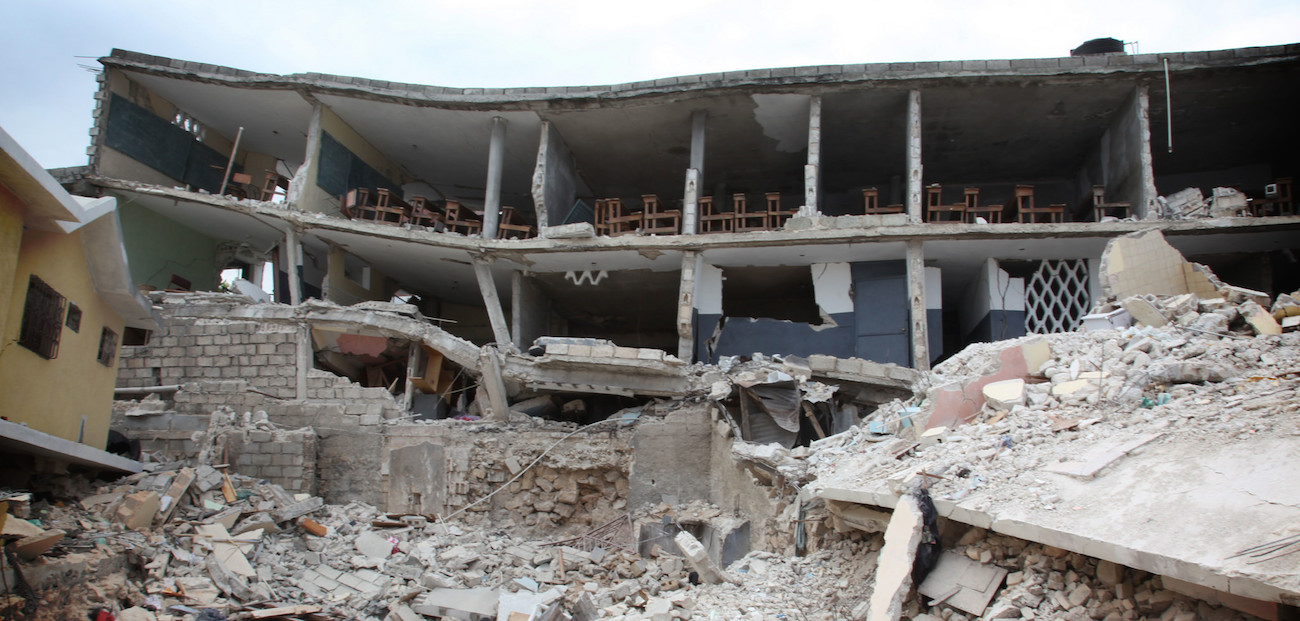
My first visit to Haiti was four months after the January 12, 2010 earthquake.
It was before I joined Haiti Partners staff, and Kent, John, and several Haitian colleagues took us to the site where our colleague Enel had barely survived the collapse of a 6-story building. As we stood in front of the rubble hearing Enel’s story, workers at the site paused their rubble removal efforts. A weathered old garbage truck pulled up, and several bodies that had been found in the wreckage were wrapped in white sheets and put in the back before the truck rumbled away as quickly as it had arrived.
A mournful quiet settled in all around us.
Part of the tragedy of the earthquake is that we’ll never know the true number of people who died, much less their names or their stories. In the harrowing days after the earthquake, as bodies were still being pulled from the rubble, only two things seemed clear: the scale of destruction was enormous, and without an equally enormous effort, many more of the living could soon join the dead.
Many Haitian government buildings and the U.N. headquarters had been destroyed, putting emergency responders back on their heels before they could even begin. As the director of Haiti’s Red Cross, Guiteau Jean-Pierre put it, “We pass through the bodies, we saw the bodies, we don’t have time to count them right now.” And beyond the urgent relief effort, attempts to count the dead were complicated by the lack of available data prior to the earthquake, the exodus of tens of thousands from the cities to the countryside, and the burial of so many bodies deep under the rubble.
By February, the Haitian government and other international agencies were reporting the official death toll to be 230,000. By the first anniversary of the earthquake, this number was raised to 316,000. And while several studies have contradicted these numbers, they have also contradicted each other. A team of researchers from the University of Michigan had completed the first half of an extensive household survey in Port-au-Prince when the earthquake hit; in its aftermath, they tracked down the subjects again to learn more about the quake’s impact. They estimated that around 160,000 people had died in the earthquake and the days that followed. A similar survey commissioned by USAID after the earthquake estimated that only 60,000 people had died. Still other investigations have produced a wide variety of numbers between the two extremes.
The debate over the numbers has continued, often with accusations and counter-accusations that different estimates are being touted for political gain. But as Kent wrote in After Shock, paraphrasing Holocaust survivor Elie Wiesel, “Any statement that contains ‘logic’ like this — only hundreds of thousands killed, not millions! — is absurd and dehumanizing. Such comparisons diminish those who faced the horrors. People deserve to be respected and remembered in the singularity of what they faced.”
Whatever this actual number of is, what remains undisputed is the massive scale of the tragedy. Thousands upon thousands of men, women, and children, each uniquely bearing God’s image, lost their lives on January 12, 2010, and the following days. We remember and mourn the dead. And we stand with the living, who, in the face of a tragedy so deeply personal and so widely devastating, and in the face of many other challenges, have fought hard to rebuild their country in honor of those that were lost.